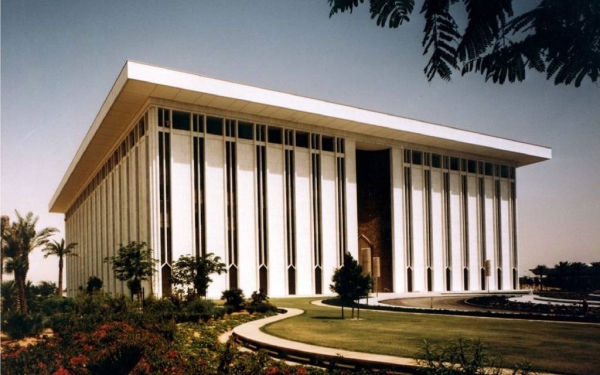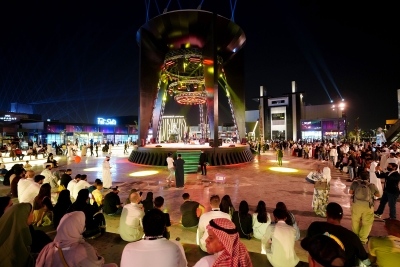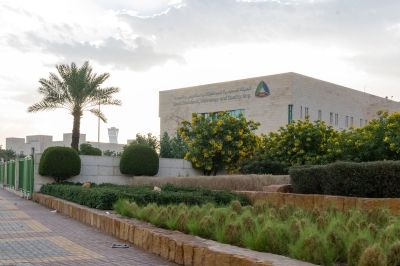

The Saudi Central Bank (SAMA) is the central bank of the government of the Kingdom of Saudi Arabia. It was established on April 19, 1952, during the reign of the Founding King Abdulaziz Bin Abdulrahman Al Saud. It is the second-oldest central bank in the Arab world and was established to regulate the monetary instability in the Kingdom at that time. Originally designated as the Saudi Arabian Monetary Authority (SAMA,) it retained this title until November 24, 2020, when King Salman Bin Abdulaziz Al Saud approved changing its designation to Saudi Central Bank.
Beginnings of the Saudi Central Bank
George A. Blowers, a US national, was the first governor of SAMA. He had previously served as Deputy Director of the Economic Cooperation Administration, set up to administer the US Marshall Plan for economic rejuvenation in Europe. The Central Bank started operating five months after its establishment, with Jeddah serving as its headquarters before relocating to Riyadh at the end of 1984.
One of the initial tasks assigned to the Central Bank was to stabilize the value of the Saudi currency, subsidize it both domestically and internationally, offer advice to the government on currency minting and issuance, and oversee the banking system, including commercial banks and exchange agents engaged in the trade of foreign currencies.
Saudi monetary systems
The Kingdom has witnessed the issuance of four monetary systems throughout its history. The first was the Hejazi-Najdi Monetary Regulation, which was issued before the establishment of SAMA. The second system was issued in 1956, followed by the third system in 1958 (due to the financial and monetary crisis faced by the Kingdom during the period 1955-1958.) The fourth system was issued in 1960 and is still in effect to this day.
Saudi monetary issues
Since its establishment, the Central Bank has launched six issues of banknotes. The first official banknotes were issued in the denominations of one hundred, fifty, ten, five, and one riyal on June 14, 1961.
In the sixth and current issue of Saudi currency, the Central Bank has introduced thirteen different coin and banknote denominations, six of which are paper based. The five-riyal banknote features the portrait of King Salman and a view of the Shaybah Oil Field in the Empty Quarter. The five-riyal polymer banknote features King Salman's portrait, a view of the Shaybah Oil Field in the Empty Quarter, and the logo of Saudi Vision 2030. The ten-riyal note shows King Salman's portrait and Murabba Palace in Riyadh. The front of the fifty-riyal note displays King Salman's portrait and the Dome of the Rock. The back of the note shows a view of al-Aqsa Mosque in Jerusalem. The front of the hundred-riyal note depicts King Salman's portrait and the Green Dome of the Prophet's Mosque. The back of the note shows a view of the Prophet's Mosque in Madinah. The front of the 500-riyal note features the portrait of King Abdulaziz and a picture of the Kaaba. The back of the note shows a view of the Grand Mosque in Makkah. In addition, there are seven metal coin categories, including one halala, five halalas, ten halalas, twenty-five halalas, and fifty halalas, all of which bear the state emblem. The one-riyal coin shows the portrait of King Salman, while the two-riyal coin shows the portrait of King Abdulaziz.
Central Bank tasks
The Central Bank has several tasks, including performing the functions of the government's bank, managing the Kingdom's foreign exchange reserves, managing monetary policy to maintain price and exchange rate stability, promoting the development and safety of the monetary system, and monitoring commercial banks and currency exchange agents. The Central Bank oversees cooperative insurance companies, insurance-related self-employed companies, finance companies, and credit information companies.
In 1984, a ministerial committee was formed, composed of the Ministry of Finance and National Economy (currently the Ministry of Finance,) the Ministry of Commerce, and the Saudi Central Bank to regulate and develop the stock market. The Central Bank was then given the responsibility of operating and organizing the day-to-day operations of the market.
International participations of the Central Bank
The Central Bank participates in meetings of several regional and international financial organizations and entities, including the International Monetary Fund, the World Bank Group, the G20, the Bank for International Settlements, the Financial Stability Board, the Financial Action Task Force, the Middle East and North Africa Financial Action Task Force, the International Association of Insurance Supervisors, the Islamic Financial Services Board, the Accounting and Auditing Organization for Islamic Financial Institutions, the Gulf Monetary Council, the Arab Monetary Fund, the Islamic Development Bank Group, and the International Association of Deposit Insurers.
Related quizzes
Related articles

